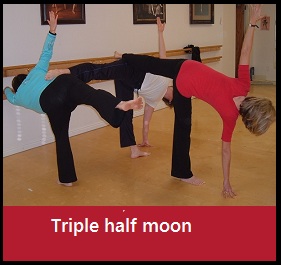The first week of December we did a practice that discussed the red light reflex and poses that help us be aware of the muscles that are involved in the reflex and to notice if we have that hunched over posture in our yoga practice. Here is a nice article if you want more information about the red light reflex.
Shelly also gave some instruction and detail about the root lock or mula bandha. This second week of December Leslie will continue on the theme of mula bandha and here is a wonderful article discussing the PFM (Pelvic Floor Muscles). It is an explanation that is for the western mind and easy to understand and follow.
Here is what Leslie will share with the class and some of the info is taken from the above article:
The mula bandha or root lock contributes to a lightness and lifting action in the yoga postures, but it also contributes to the health and stabilization of the organs and systems in the pelvic region of the body. So when we add the mula bandhas to our practice, it’s beneficial on many levels, physically and energetically.
In English, that means, let’s do it, it’s good for us.
The pelvic floor muscles are a complex structure of both muscles and fascia but I will just refer to the whole structure as the pelvic floor muscles or PFM or mula bandhas. Mula means root – like the root of our spine, and bandhas means lock.
If your pelvis is a bowl the PFM are the bottom of the bowl, so visualize a suction action on the inside of the bottom of the bowl and you are lifting up and into the body. Its basically the kegel exercise or the same muscles you contract if you have to go to the bathroom very soon, but are without a bathroom.
There are two different ways to use the mula bandha during our practice. Tuesday will be this first way that I describe – a held contraction, and Thursday will be a stronger lift but relaxing with each breath.
For Tuesday: The PFM can get fatigued if we contract them strongly over the length of our practice, just like any other muscle would get tired from use. So rather than a strong lock at the beginning, and fatigue at the end, strike a balance by contracting the mula bandha about 25 % during the whole yoga practice.
First contract the PFM as much as you can, then relax by half, then by half again. This is what you want to feel as you hold each pose and breathe thru each posture.
For Thurday: With each inhale, allow the belly and PFM to relax completely. With each exhale, pull the belly in and up, contract strongly mula bandhas. Some postures make this strong mula bandhas very difficult because of the tilt of the pelvis or gravity pulling the belly down.



